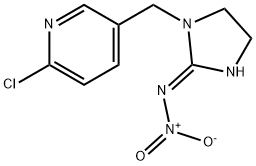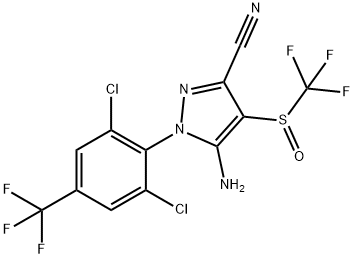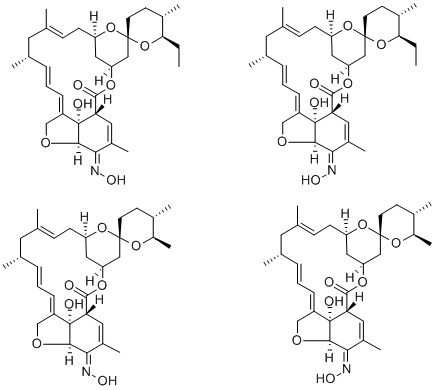
138261-41-3
- Product Name:Imidacloprid
- Molecular Formula:C9H10ClN5O2
- Purity:99%
- Molecular Weight:255.66
Product Details:
CasNo: 138261-41-3
Molecular Formula: C9H10ClN5O2
Appearance: White to Off-White Solid
Delivery Time: 2 weeks after order
Throughput: 100KG/Month
Purity: 99%
Synonyms: bay-ntn33893; confidorsl; merit(insecticide); provado; (2E)-1-[(6-Chloro-3-pyridinyl)Methyl]-N-nitro-2-iMidazolidiniMine; Couraze; Grubex
Boiling point: 93.5°C
Density: 1.54 g/cm3
Refractive index: 1.5790
Fp: 2 °C
Pka: 7.16±0.20
Water Solubility: 0.061 g/100mL at 20 ºC
Solubility:
DMSO: 75.5 (Max Conc. mg/mL); 295.31 (Max Conc. mM)
Ethanol: 2.0 (Max Conc. mg/mL); 7.82 (Max Conc. mM)
Water: 1.0 (Max Conc. mg/mL); 3.91 (Max Conc. mM)
Uses:
Imidacloprid is the active ingredient in AdvantageTM used to control fleas in dogs and cats. Clothianidin is the major metabolite of thiamethoxam and both compounds are registered for use as insecticides. Widespread use increased greatly in the 1990s as alternatives to organophosphosphorus and carbamate insecticides because of their much lower mammalian toxicity and resistance developed to other pesticides. Imidacloprid has become the most widespread insecticide used in the world.
Mechanism of action:
Imidacloprid is a neurotoxic insecticide, which belongs to the class of the neonicotinoid pesticides. Imidacloprid is registered to control insect pests on agricultural and nursery crops, structural pests and parasites on companion animals.
Imidacloprid is an agonist of the nicotinic acetylcholine receptor (nAChR) at the neuronal and neuromuscular junctions in insects and vertebrates. It is structurally and functionally related to nicotine. The toxicity of imidacloprid is largely due to interference of the neurotransmission in the nicotinic cholinergic nervous system. Prolonged activation of the nAChR by imidacloprid causes desensitization and blocking of the receptor, and leads to incoordination, tremors, decreased activity, reduced body temperature and death. Presently, there is no specific antidote, which acts as an antagonist to the effects imidacloprid.
Pharmacology:
Imidacloprid is a nitroguanidine compound and belongs to the nitromethylene family of chemicals. Themode of action of imidacloprid involves interference with neurological transmission in insects by binding to the postsynaptic nicotinic acetylcholine receptors. Imidacloprid is available as a spot-on treatment for cats and dogs for flea control, and, following application, it distributes throughout the skin within 6 h. It is not absorbed systemically by the animal, and its adulticidal activity is by contact with fleas.
Imidacloprid, besides its agricultural use, is also used for the control of subterranean pests and pet ectoparasites.
Relevant Products
-
Milvexian
CAS:1802425-99-5
-
Fipronil
CAS:120068-37-3
-
Milbemycin oxime
CAS:129496-10-2








